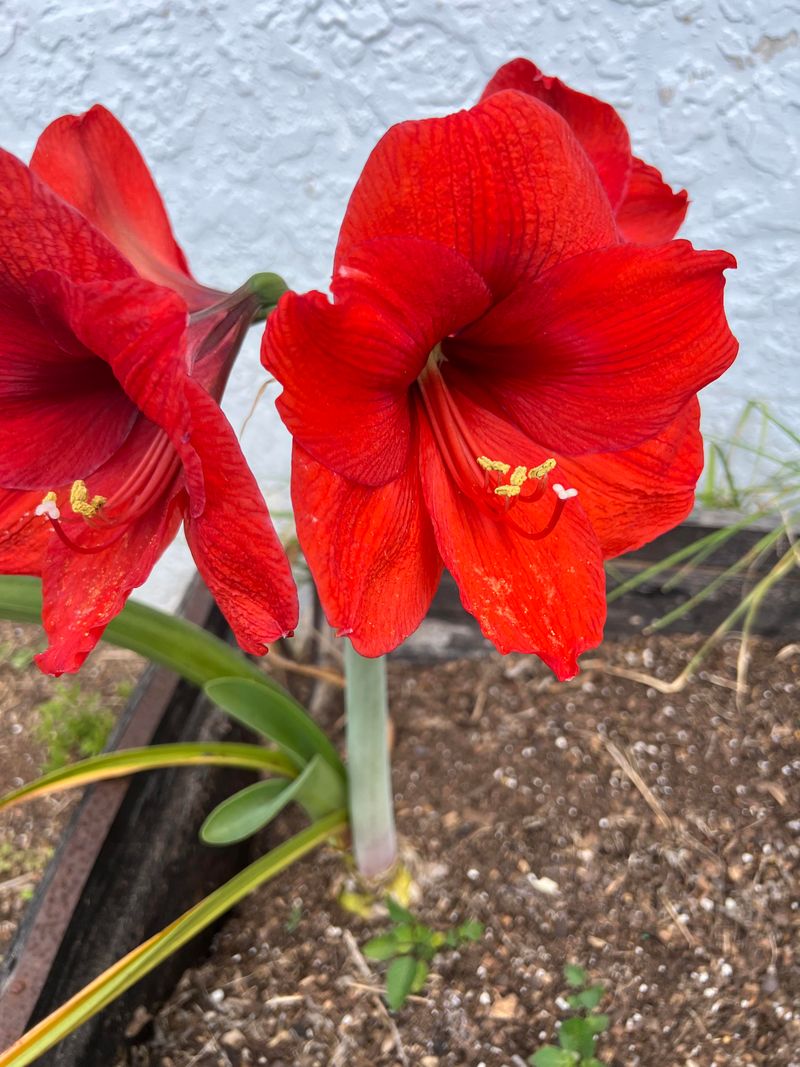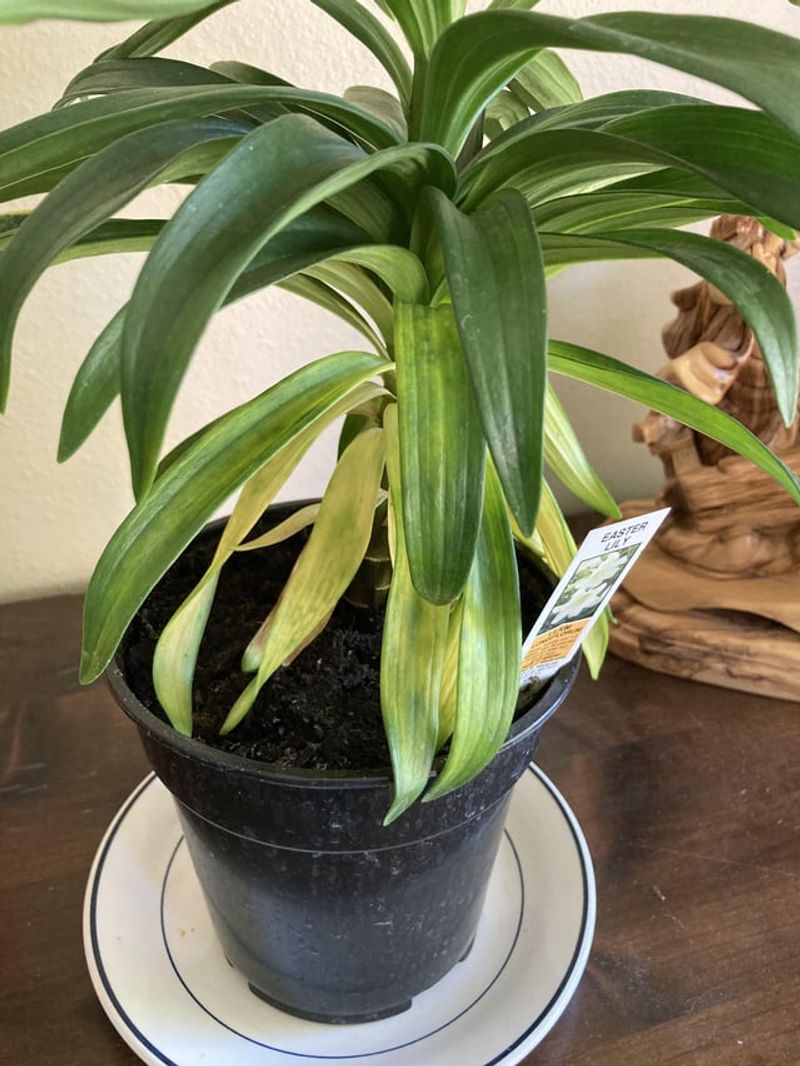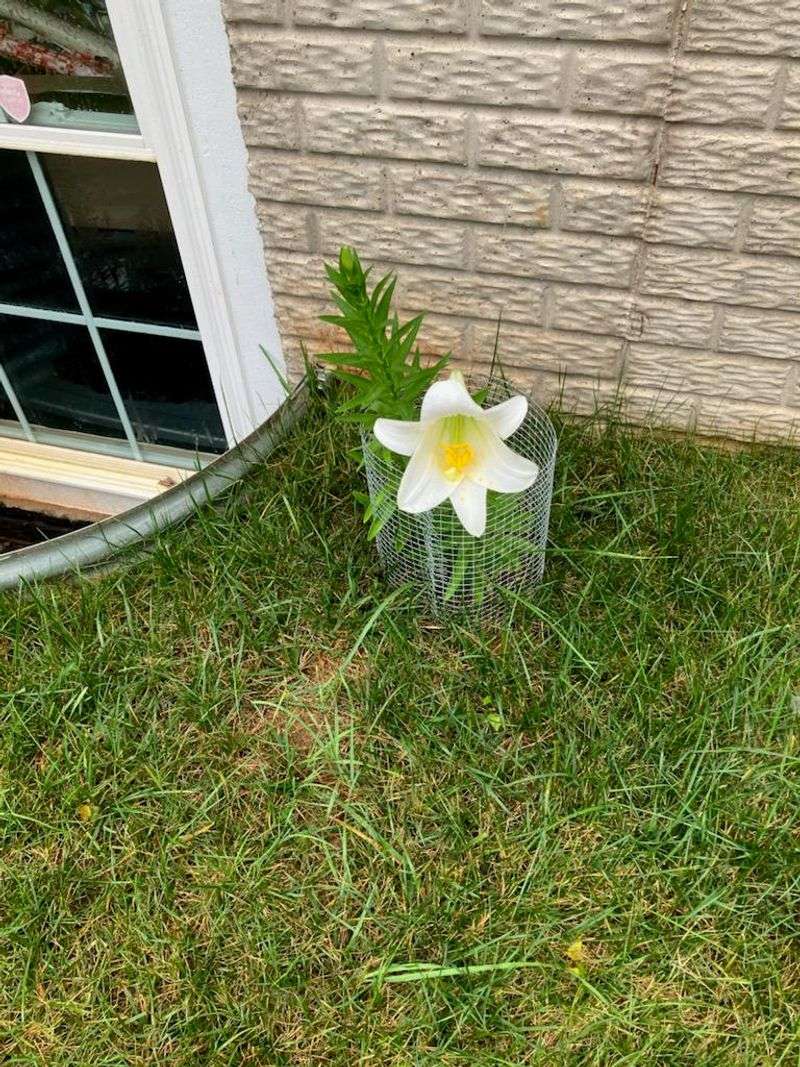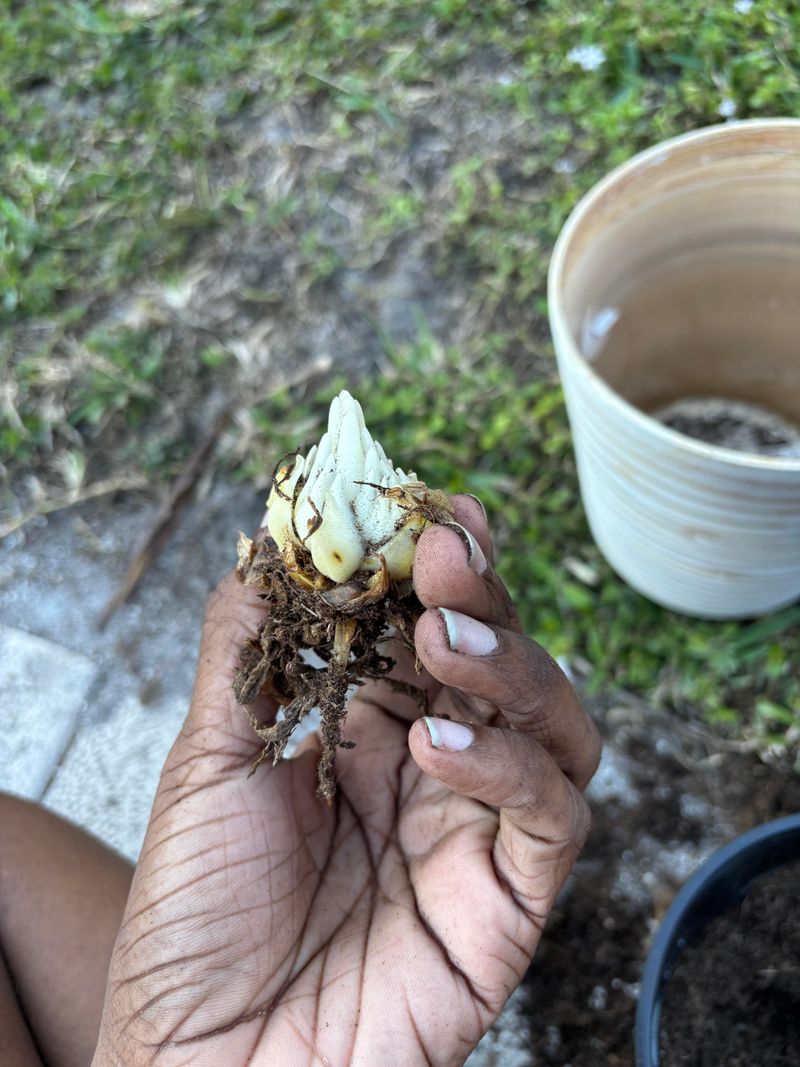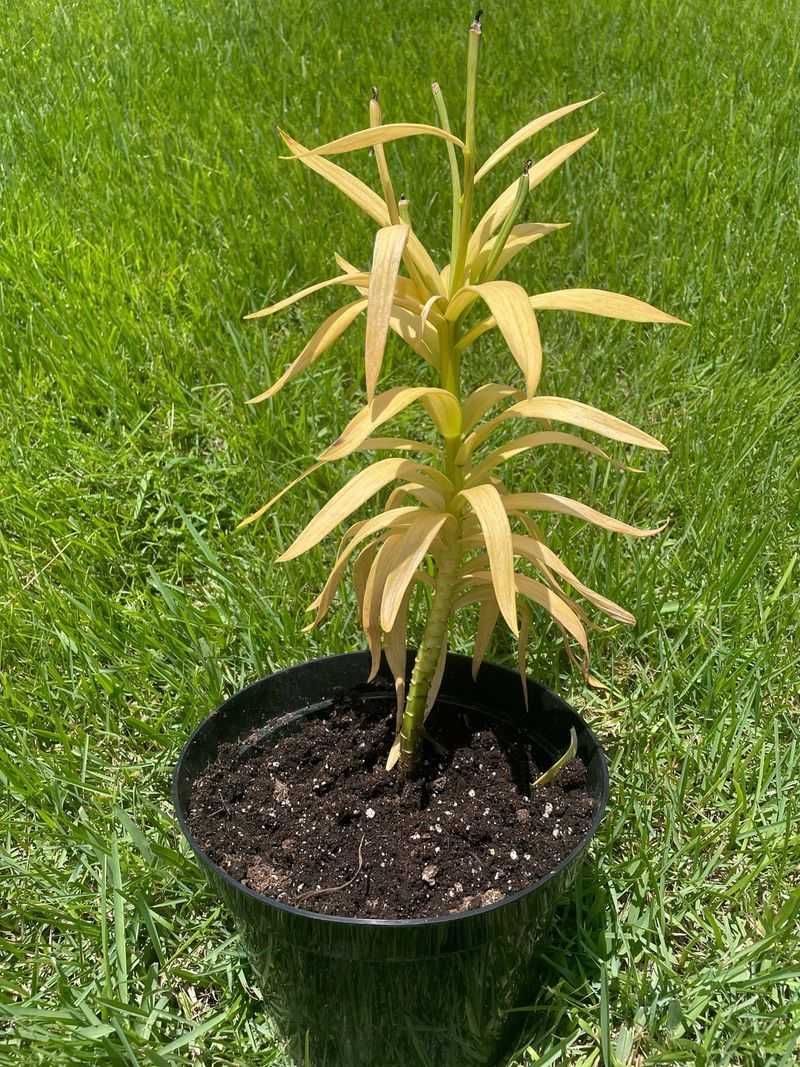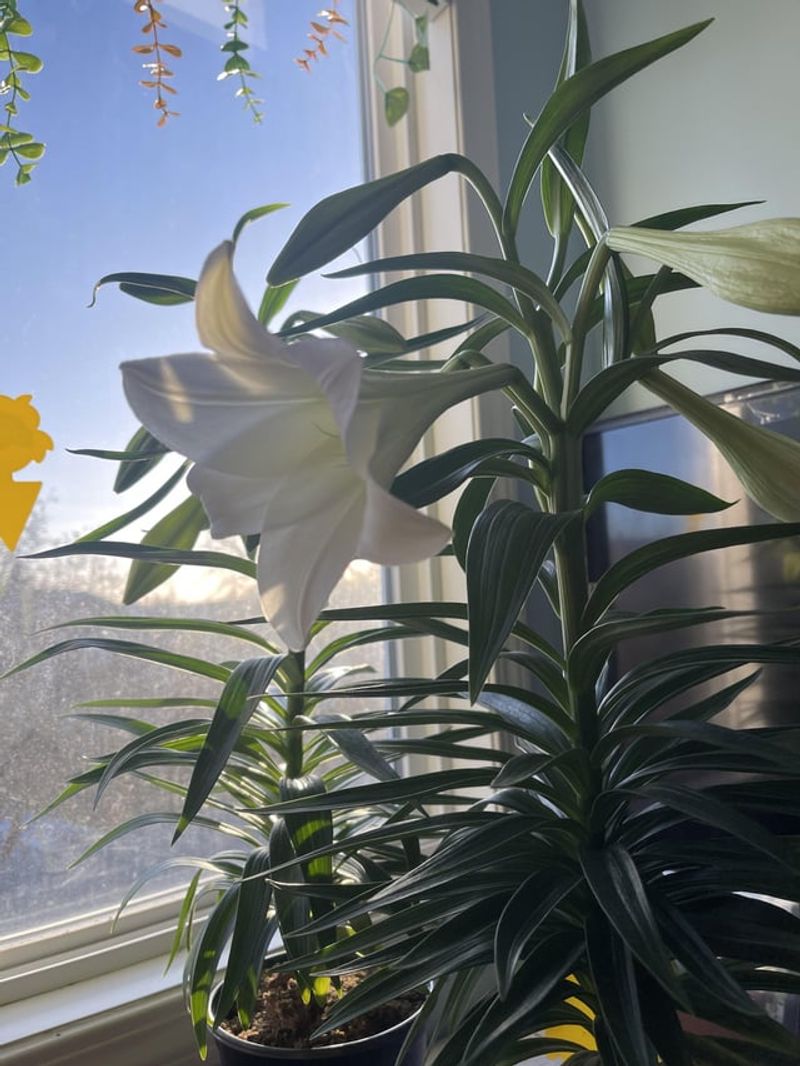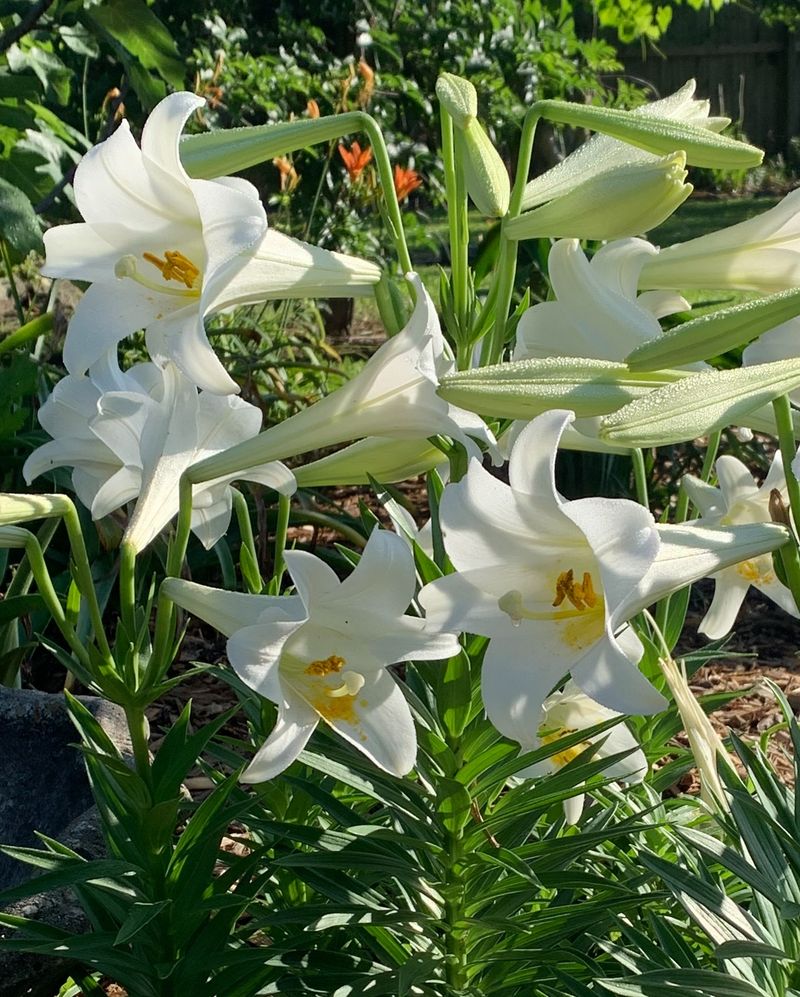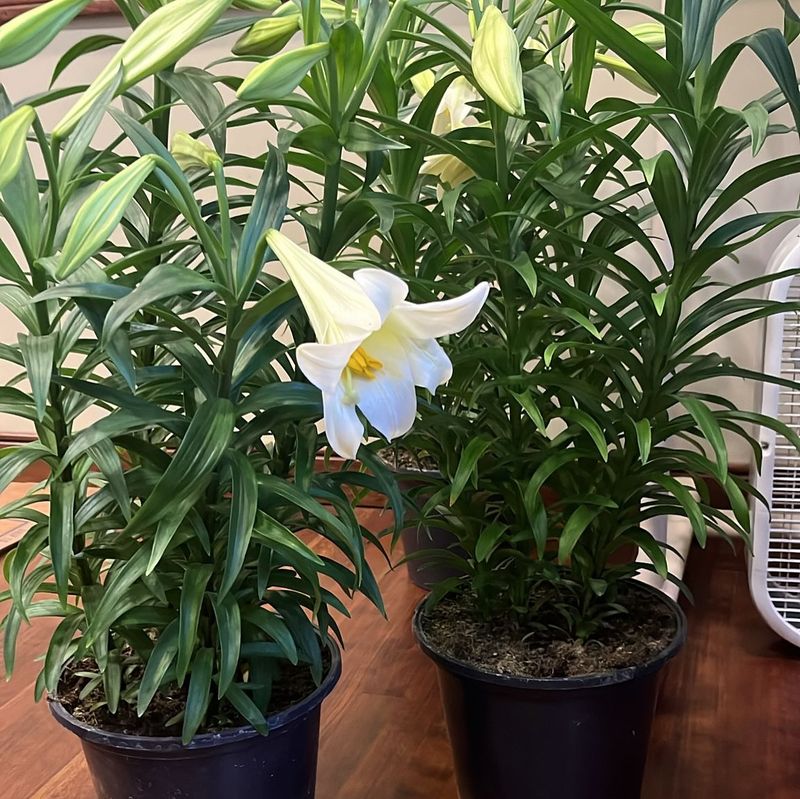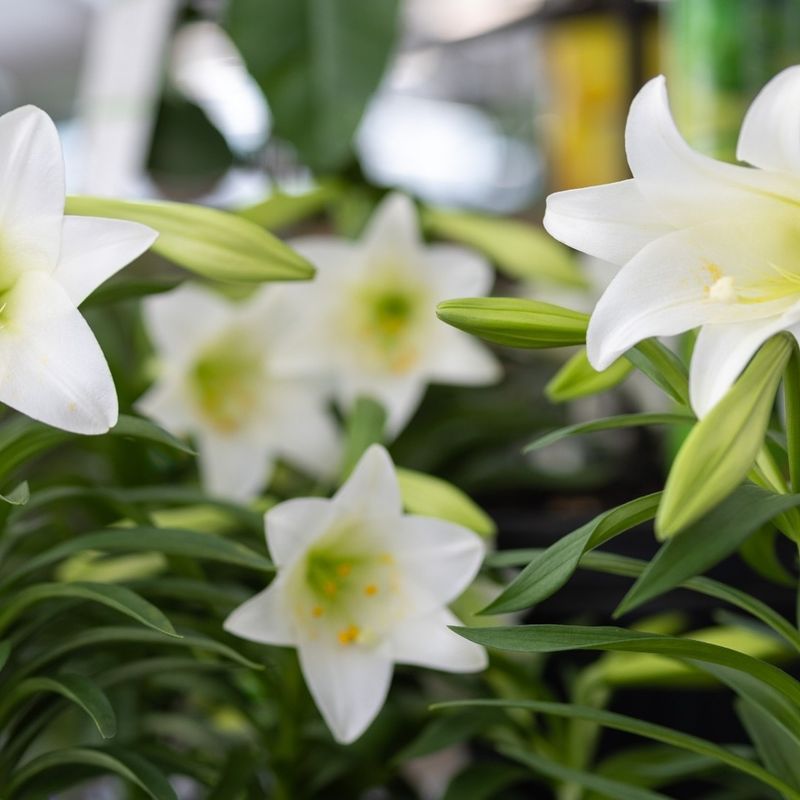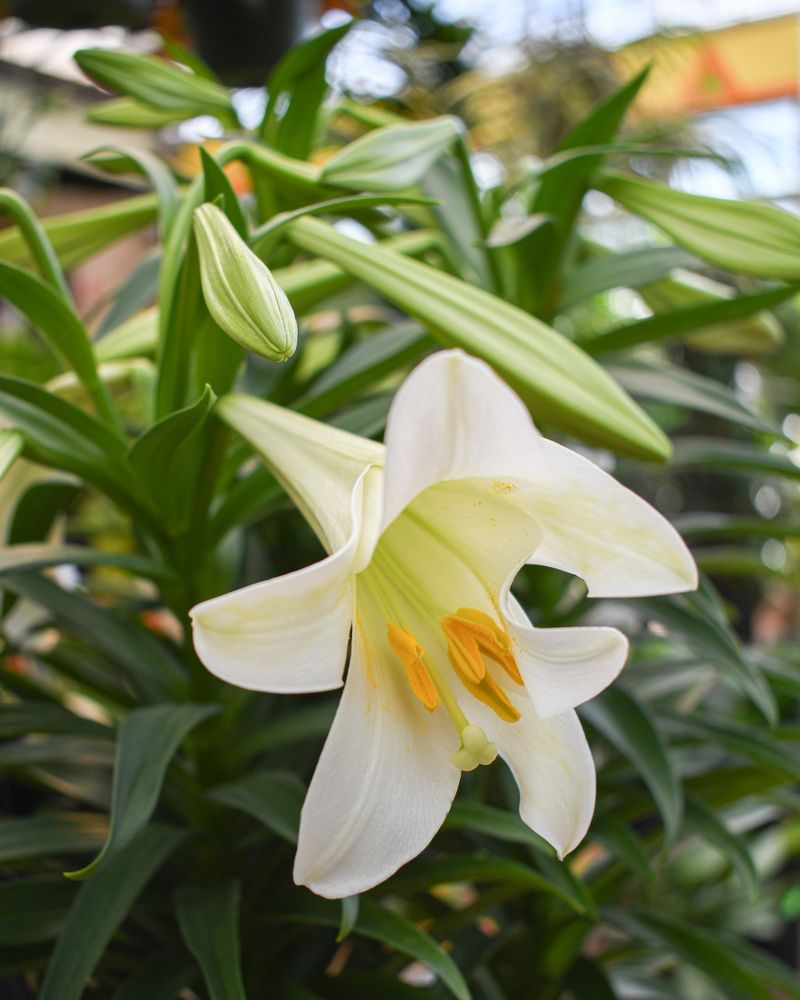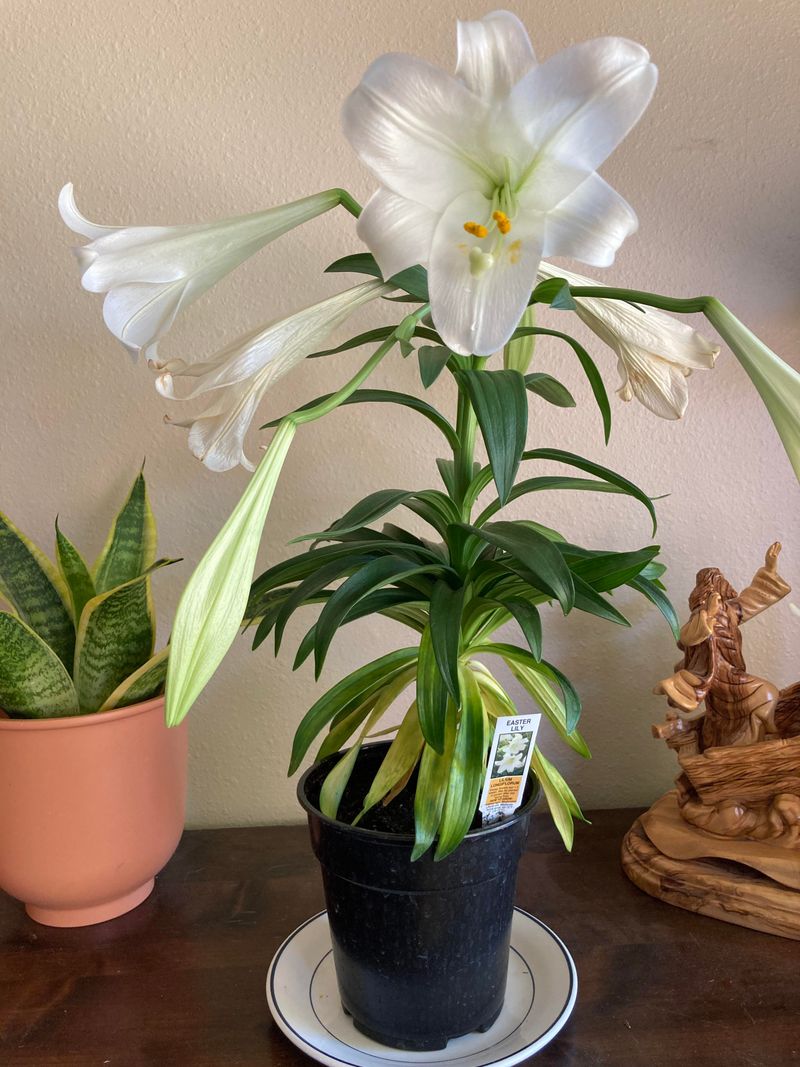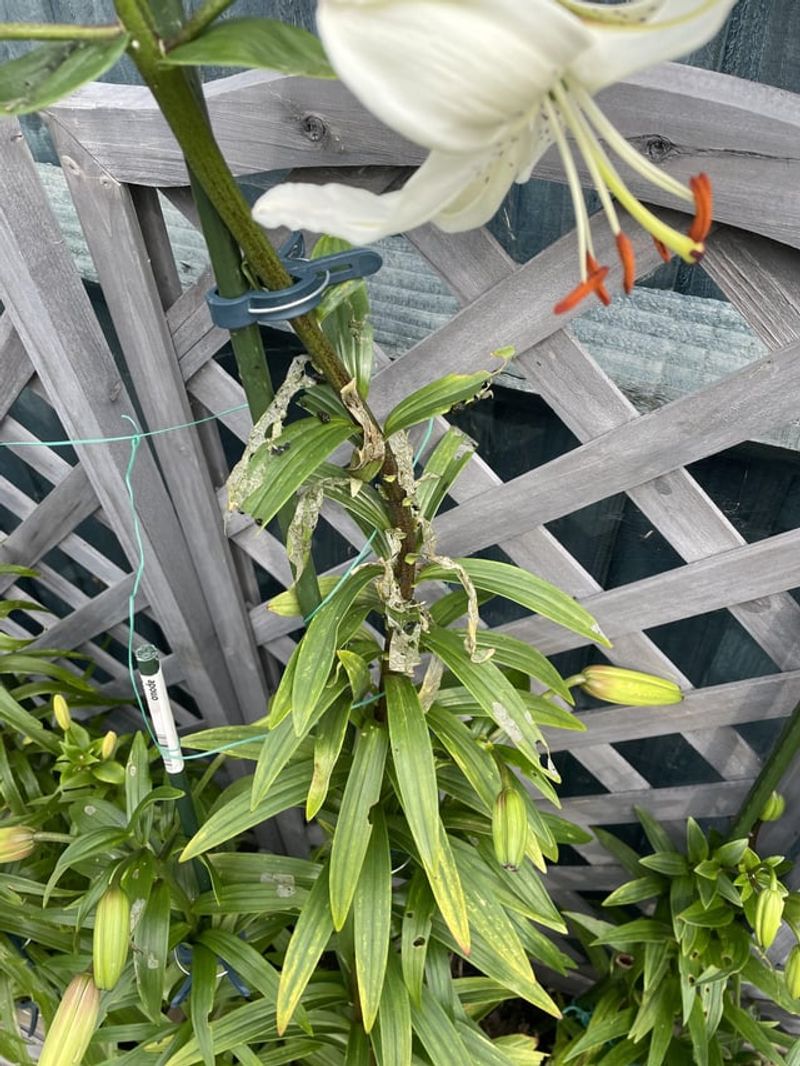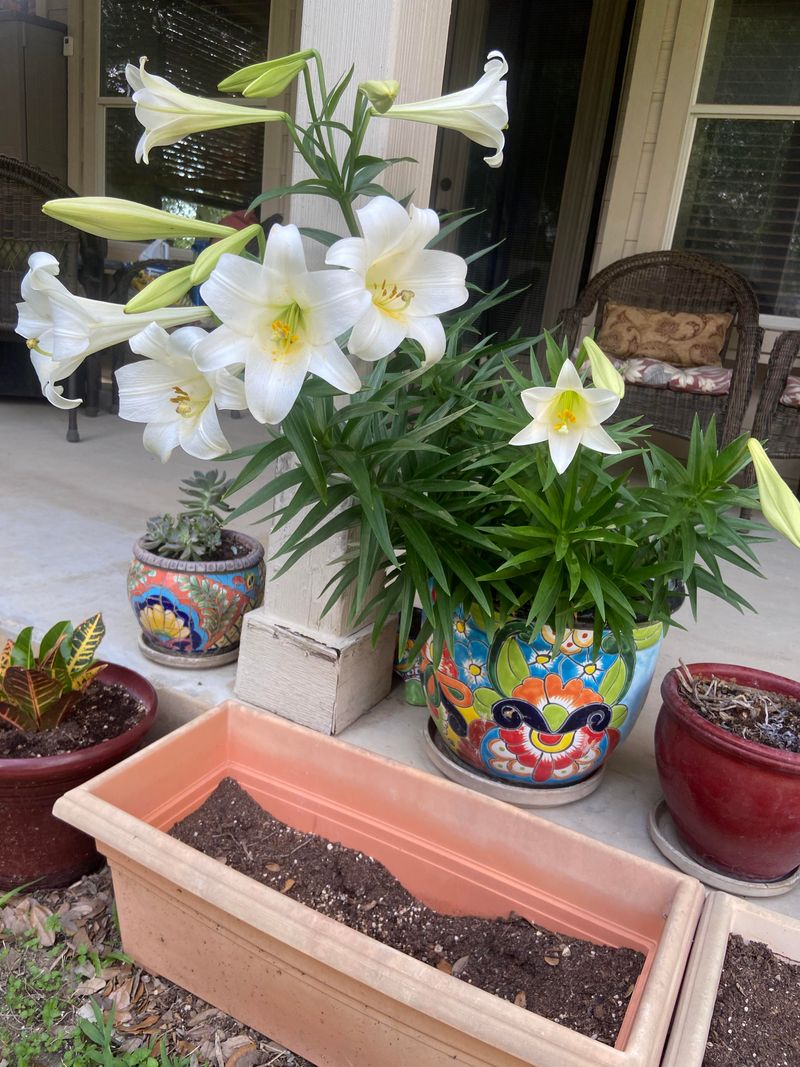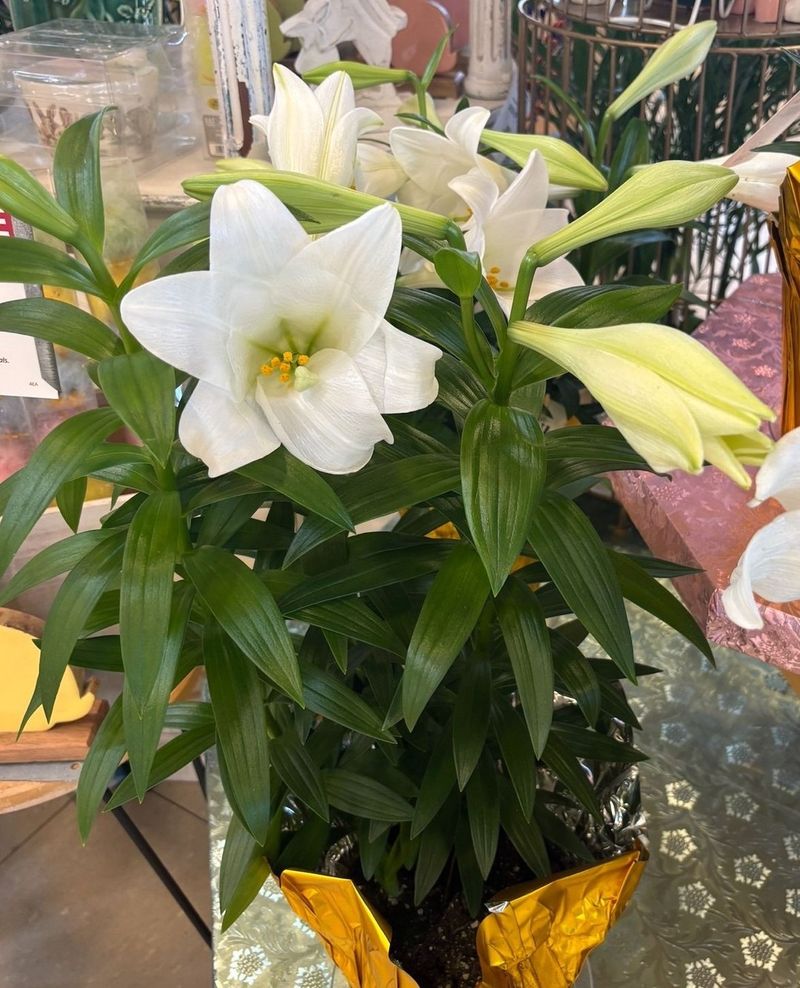Easter lilies aren’t just for indoors—they can thrive outside too, and they’re absolutely stunning in the garden. I gave it a shot one spring, and now they’re one of my favorite flowers to grow.
With just a bit of care and the right timing, they’ll reward you with those gorgeous white blooms year after year. These 10 steps will help you get it right the first time, without the stress.
I’ll also share a few tricks I’ve picked up to keep the flowers looking fresh for as long as possible.
1. Choose the Perfect Planting Location
Sunlight makes all the difference for Easter lilies. They need about 6 hours of direct morning sun with afternoon shade to protect their delicate petals from scorching.
Look for a spot with good drainage – these beauties hate wet feet! A slightly elevated area or slope works wonderfully. The ideal location also offers some protection from strong winds that could snap their tall stems.
2. Prepare Rich, Well-Draining Soil
Easter lilies demand soil that drains quickly yet holds enough moisture for their roots. Mix your garden soil with plenty of compost and some coarse sand to create the perfect balance.
The ideal pH falls between 6.5 and 7.0, slightly acidic to neutral. If your soil is heavy clay, consider creating raised beds. Adding a layer of organic mulch helps maintain consistent moisture while suppressing weeds that compete for nutrients.
3. Time Your Planting Strategically
Fall planting gives Easter lilies the best head start for next year’s blooms. Wait until after the first frost when temperatures cool but before the ground freezes solid – typically October to November in most regions.
For holiday gift plants, wait until all danger of frost has passed in spring before moving them outdoors. The transitional temperatures of early spring or fall reduce transplant shock. Avoid summer planting when heat stress could prevent proper establishment.
4. Master the Bulb Planting Technique
Dig holes about 6 inches deep and space bulbs 12-18 inches apart to give mature plants room to spread. Position bulbs with their pointed end facing upward and roots downward.
Cover with soil, firming gently to eliminate air pockets without compacting too much. The top of the bulb should sit about 6 inches below the soil surface in colder regions; plant slightly shallower (4-5 inches) in warmer areas to prevent bulb rot.
5. Water Newly Planted Lilies Properly
Give your freshly planted lilies a thorough soaking immediately after planting to settle soil around roots. Water deeply rather than frequently – aim for about 1 inch of water weekly including rainfall.
Monitor soil moisture by inserting your finger about 2 inches deep – if it feels dry, it’s time to water. Morning watering allows foliage to dry before evening, preventing fungal issues. Always water at the base rather than overhead to keep leaves dry.
6. Apply Mulch for Protection and Moisture
Spread 2-3 inches of organic mulch around your lilies to suppress weeds and retain consistent soil moisture. Straw, shredded bark, or leaf compost work perfectly without matting down or trapping excessive moisture.
Keep mulch pulled back slightly from stems to prevent rot issues. In colder regions, apply a thicker layer (4-6 inches) after the ground freezes for winter protection. Remove excess mulch in spring to allow new shoots to emerge easily.
7. Fertilize with Balanced Nutrients
Feed Easter lilies with a balanced, slow-release 10-10-10 fertilizer when shoots first emerge in spring. Sprinkle granules around plants about 6 inches from stems, then water thoroughly to help nutrients reach roots.
A second light feeding after flowering helps build strength for next year’s blooms. Avoid high-nitrogen fertilizers that promote lush foliage at the expense of flowers. Always follow package directions to prevent fertilizer burn on sensitive lily roots.
8. Support Tall Stems Before Blooming
Easter lily stems can reach 3 feet tall and become top-heavy when blooming. Install support stakes when plants reach about 12 inches tall – waiting until they’re taller risks damaging the developing root system.
Use bamboo stakes or slender metal supports, placing them a few inches from the stem. Secure stems loosely with garden twine or plant ties, creating a figure-eight pattern that won’t constrict growth. Add additional ties as the plant grows taller.
9. Remove Spent Flowers Carefully
Deadhead faded blooms promptly by snipping just below the spent flower. This prevents energy waste on seed production and keeps plants looking tidy. Leave the green stem and all foliage intact – they’re still feeding the bulb!
Use clean, sharp scissors or pruners to make clean cuts and prevent disease transmission. The yellow pollen can stain clothing and fingers, so consider removing anthers when flowers first open if this concerns you. Wear gloves if you have sensitive skin.
10. Let Foliage Mature Naturally
Resist the urge to cut back yellowing foliage after blooming ends. Those leaves are busy photosynthesizing, sending energy to the bulb for next year’s flowers. The foliage needs to complete its natural lifecycle.
Wait until leaves turn completely yellow and start to dry before trimming them back. This typically happens by late summer or early fall. If the browning foliage bothers you visually, consider planting shorter companions in front to hide the aging lily leaves.
11. Protect from Common Pests
The red lily leaf beetle can devastate Easter lilies if left unchecked. These bright scarlet insects and their larvae munch on leaves, leaving unsightly damage. Check undersides of leaves regularly and remove beetles by hand.
Aphids may cluster on stems and buds, sucking plant juices. A strong spray of water often dislodges them. For serious infestations, insecticidal soap provides effective control. Slugs and snails also enjoy tender lily shoots – set up beer traps or apply diatomaceous earth around plants.
12. Monitor for Disease Signs
Botrytis blight causes brown spots on leaves and flowers during humid weather. Improve air circulation by proper spacing and remove affected parts immediately. Fungal issues spread quickly in wet conditions!
Bulb rot shows up as yellowing, wilting plants despite adequate moisture. This usually indicates poor drainage or overwatering. Basal rot fungus enters through wounded bulbs, so handle carefully during planting. Always use clean tools when cutting any part of your lilies.
13. Divide Overcrowded Clumps
Easter lilies multiply underground, forming clumps that become crowded after 3-4 years. Dividing rejuvenates plants and increases your collection! Wait until fall when foliage has yellowed completely before carefully digging up the entire clump.
Gently separate bulbs, discarding any that feel soft or show signs of disease. Replant immediately at proper spacing and depth. Each healthy bulb will grow into a full-sized plant next season. This division process keeps your lilies blooming abundantly year after year.
14. Prepare for Winter Protection
In colder regions (zones 4-6), Easter lilies benefit from extra winter protection. After the ground freezes, apply a thick layer of mulch – straw, pine needles, or shredded leaves work well – about 4-6 inches deep over the entire lily bed.
This insulating layer prevents freeze-thaw cycles that can push bulbs out of the ground. Remove mulch gradually in spring as temperatures warm to allow new shoots to emerge. In milder climates (zones 7-10), a standard 2-3 inch mulch layer provides sufficient protection.
15. Manage Seasonal Care Calendar
Create a simple care calendar to track your Easter lily maintenance. Spring focuses on fertilizing, watering as growth begins, and watching for emerging pests. Summer requires deadheading spent blooms and continued watering during dry spells.
Fall is for planting new bulbs, dividing crowded clumps, and beginning winter preparations. Winter mostly involves monitoring mulch coverage after storms. Having this schedule prevents overlooking critical care tasks that keep your lilies thriving through the seasons.


